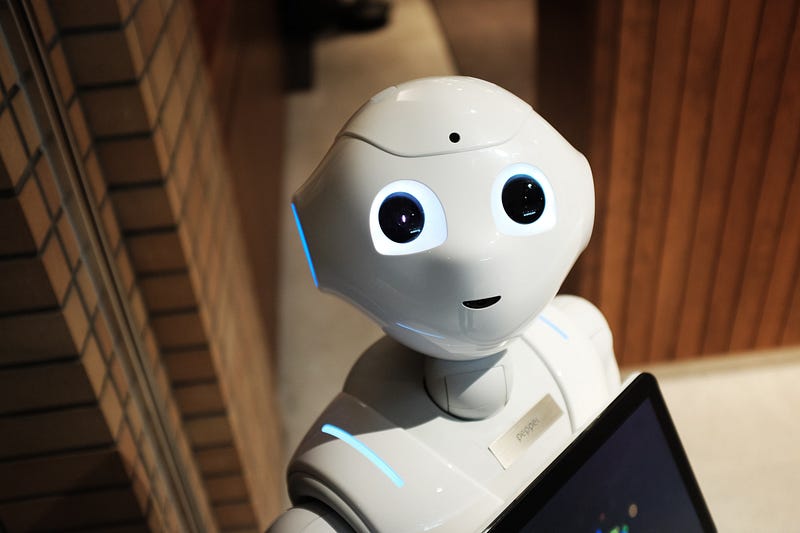Revolutionizing Healthcare: The Impact of Robotics on Medicine
Written on
Chapter 1: The Rise of Healthcare Robotics
Recent advancements in robotic technology are poised to transform the medical landscape significantly. However, this evolution raises critical questions about its implications.

In the past few years, there has been a notable increase in the utilization of robotic systems within the medical field. These cutting-edge technologies have been integrated into various aspects of healthcare, enhancing surgical procedures, elderly care, patient rehabilitation, and even providing companionship.
One of the most exciting developments is in soft robotics, which allows for safer and more adaptable human-robot interactions (HRI). These advancements enable robots to interact with human bodies in a non-intrusive manner, thus improving health outcomes and bridging the gap between artificial systems and biological organisms.
However, as we welcome these innovations, ethical dilemmas surface. Questions arise regarding the capabilities of these systems, the risks they may present, how to manage those risks, and the level of trust we can place in them. The concept of trust is increasingly crucial in robotics, influencing every interaction between humans and machines. While there is no universal definition of trust, we interpret it as the confidence that a system will assist in achieving objectives in uncertain situations.
Section 1.1: Trust and Human-Robot Interaction
When discussing robots, we generally refer to two categories: traditional robots that physically move and interact within their environment, and robots that encompass wearable technology and autonomous devices.
Despite the promise of these technologies, significant challenges remain in understanding trust within HRI contexts. Issues such as the predictability of robotic behavior, the complexity of data management, and the reliability of trust assessments continue to pose questions. Soft robots present unique risks, including excessive force application, material degradation, and potential chemical leaks. Therefore, addressing these safety concerns is paramount during the development phase. For example, in autonomous surgical robots, creating a prescriptive control system is essential to ensure predictable behavior, prioritizing patient safety.
Moreover, many users are unfamiliar with soft robotics, which can lead to trust issues. In healthcare, both excessive trust and skepticism towards robots can have detrimental effects. Trustworthiness is especially vital when systems can evolve over time, as changes may introduce unpredictable behaviors, further complicating trust dynamics.
Robots for Healthcare: This video highlights the transformative potential of robotic technology in medical settings, showcasing various applications.
Section 1.2: Weighing the Pros and Cons
As with any technological advancement, robotic healthcare has its advantages and disadvantages.
On the positive side, robots can undertake challenging and hazardous tasks that pose significant risks to humans, doing so with a level of precision that often surpasses that of skilled professionals. For instance, in healthcare, the outcomes achieved by robotic systems can exceed those of even the most experienced surgeons.
Socially assistive robots can also deliver psychological and emotional support. However, ethical considerations surrounding the extended use of such robots must be addressed. The potential for emotional deception arises when robots exhibit emotional expressions, leading users to believe that these machines experience feelings. This can result in users prioritizing the robot's welfare over human connections.
Additionally, an over-dependence on these robots as social companions can stifle human judgment and foster emotional attachments, leading to distress if the robot malfunctions or is removed from the environment.

Chapter 2: Ethical Implications and Responsibilities
Robots Help Nurses Get the Job Done: This video explores how robots can assist nursing staff, enhancing care delivery with efficiency and compassion.
The introduction of autonomous robots in settings focused on human care, such as hospitals or nursing homes, raises significant safety and ethical concerns. Designers and implementers of robotic healthcare systems bear the burden of proof to demonstrate that these technologies are safe and trustworthy.
Several key considerations emerge. First, there must be a proactive approach to foresee and address potential harms and trust issues. Second, the onus to prove that the technology is trustworthy should rest on those advocating for its use, rather than those opposing it. Lastly, the risks associated with any proposed action must be weighed against the costs involved.
Ultimately, it falls upon the creators and designers of these robotic systems to ensure that these essential criteria are met before deploying them in real-world settings. This responsibility is critical for the advancement of robotics in healthcare.